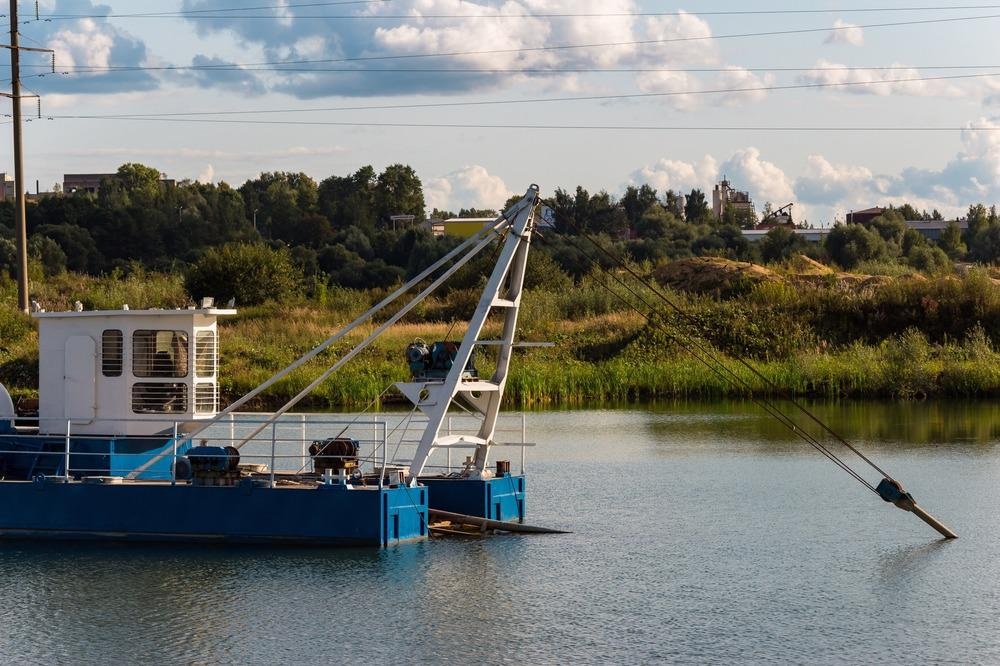The novel study in Construction and Building Materials focuses on a combination of a foam drying process with the process of carbonation stabilization to recycle dredged material for usage.

Study: A novel approach to utilizing dredged materials at the laboratory scale. Image Credit: PhotoChur/Shutterstock.com
Dredged Materials (DM)
The novel study shows that every year, hundreds of billions of tons of dredged materials (DM) are dredged to keep navigation channels open and protect port operations. DM, which is made up of solid particles and a lot of water, has long been thought of as a waste that is mostly disposed of by dumping or landfilling.
The annual discharge of DM exceeds the threshold capacities for its disposal by a large margin. Due to a paucity of disposal capacity, measures for moving and recycling these materials are required.
Limitations of Dredged Material Stabilization Process
Stabilization processes of dredged materials have been utilized for a long time. The most common is a cement-based process. It is used readily for recycling dredged materials into useful substances, especially for construction purposes.
The significant utilization of cement in DM recovery, on the other hand, is problematic, as it is not only financially unviable but also damages the environment due to carbon dioxide emissions from cement manufacture.
The significant utilization of cement in DM recovery, on the other hand, is problematic, as it is not only financially unviable but also damages the environment due to carbon dioxide emissions from cement manufacture.
Carbonation Stabilization and Its Advantages
The process of carbonation stabilization is used for substance treatment by using calcium or magnesium. The studies have shown that carbonation stabilization has many advantages over the classical methods implemented. It has a swift curing process with faster speeds, superior mechanical properties, process stability, and durable physical characteristics.
Importance of Ground Steel Slag in Carbonization Stabilization
Like active MgO, ground steel slag has a significant carbonation stabilization activity. Steel slag is an alkaline byproduct of the steelmaking process. It includes a lot of calcium oxide (about 35–50%), indicating that it has a lot of carbonation capabilities.
A recent study on the endurance and tensile qualities of carbonated steel slag has resulted in solid recycling programs and the creation of environmentally friendly building materials.
Limitations of Carbonization Stabilization
However, the latest research has also pointed out several challenges and limitations associated with the process. Steel slag is used in the process which is highly sensitive to moisture whose standard acceptable concentration is 20%. Drying low and high-viscosity DM to a moisture content level acceptable for carbonation is far more difficult.
Foaming and Convective Drying Industrial Utilization
At low temperatures, foaming and convective drying can dehydrate viscous materials. This technology has found widespread use in a variety of industries, including the food, petrochemical, and pharmaceutical industries.
Research Results
For the research, two separate specimens were synthesized. One contained the characteristic steel slag while the other did not have steel slag in its composition. The carbonated specimen selected was a stainless-steel cylindrical mold with a 39.1mm diameter.
The results showed that with the decrease in moisture content, the evaporation rate curve was obtained in three distinct phases. The study clearly expresses the fact that the addition of steel slag results in a considerable decrease in time for the drying process as the specimen with steel slag had a much quicker drying rate. The study also reveals the fact that usage of dredged materials utilizing carbonation stabilization results in a spindle-shaped material with low crystallization ability. This property is advantageous as it is indicative of superior strength.
Future Perspective
The steel slag carbonation process for dredged materials has been utilized and proposed for the first time. Ground steel slag can also be the major strength source of dried dredged materials after helping quick drying in the continuous treatment technique. Steel slag's carbonation capability is exceptional, and it has a lot of potential for enhancing the strength of fine-grained dredging products.
A comprehensive study regarding the loss degree of carbonation activity and clay along with the organic material in DM material treatment efficiency would be done in the future.
In short, the process has various advantages and a few shortcomings. The strength of DM material with steel slag has increased about 8.5 times, which is indicative of its advantageous nature. This is a highly promising result, indicating that the continuous treatment presented in this research will most likely be a novel way for recovering dredged materials efficiently.
References
Yu, C., Cui, C., Zhao, J., & Zheng, J. (2021). A novel approach to utilizing dredged materials at the laboratory scale. Construction and Building Materials. https://www.sciencedirect.com/science/article/pii/S0950061821033067
Disclaimer: The views expressed here are those of the author expressed in their private capacity and do not necessarily represent the views of AZoM.com Limited T/A AZoNetwork the owner and operator of this website. This disclaimer forms part of the Terms and conditions of use of this website.